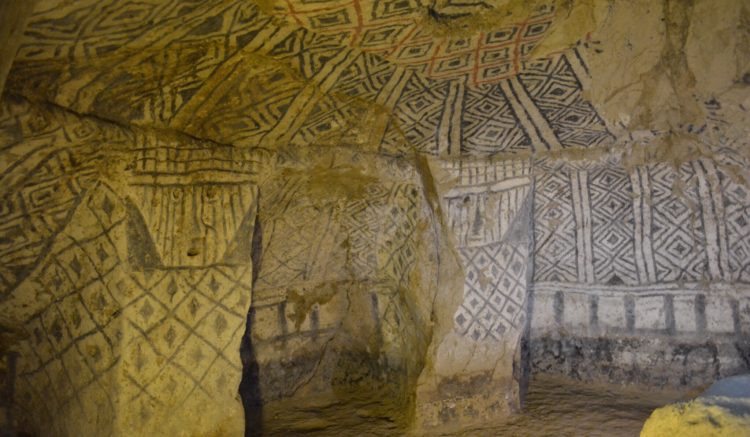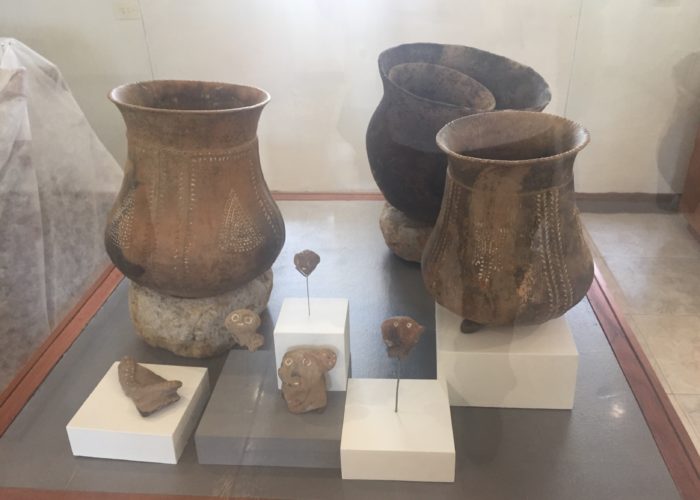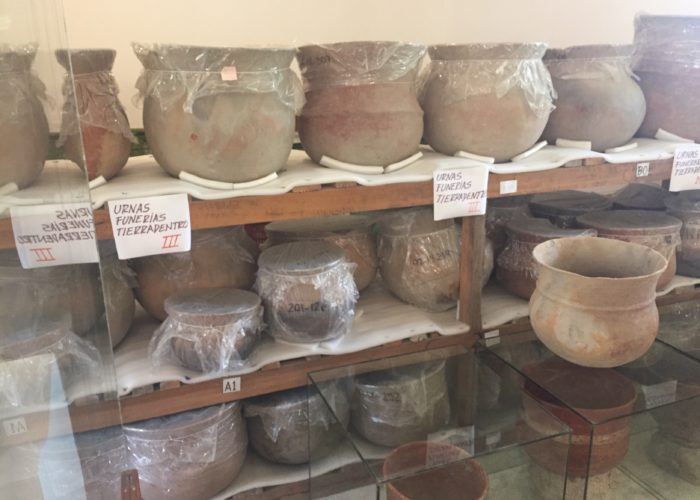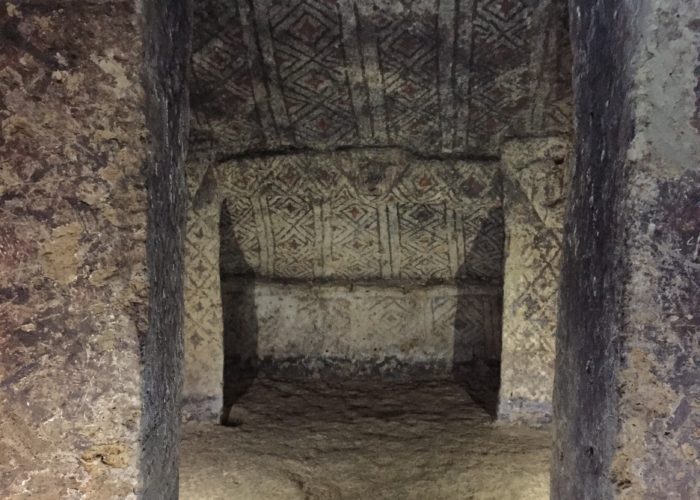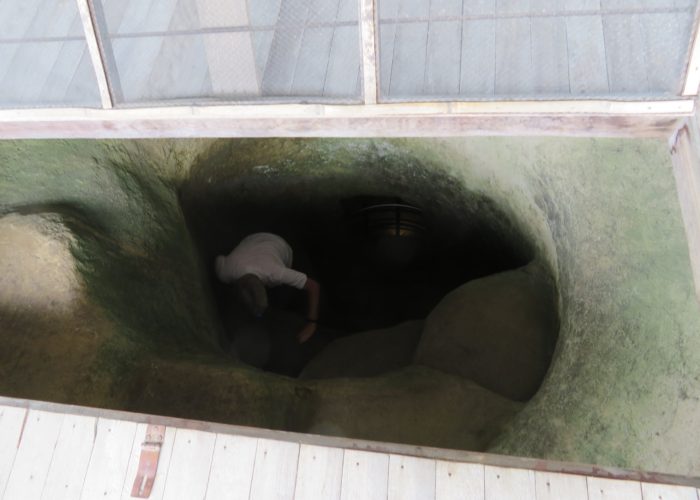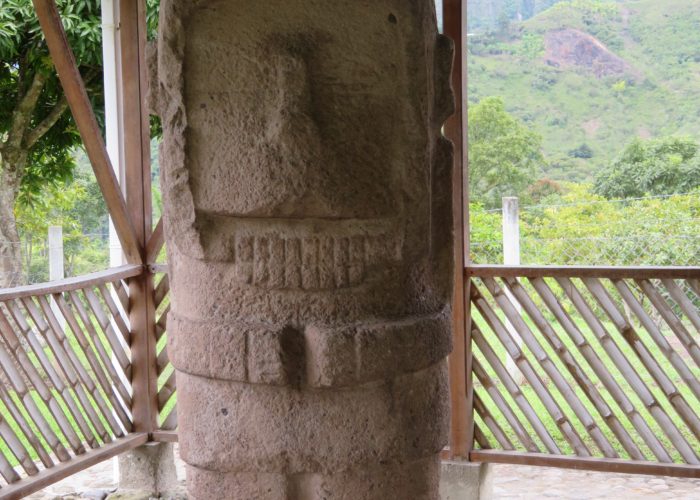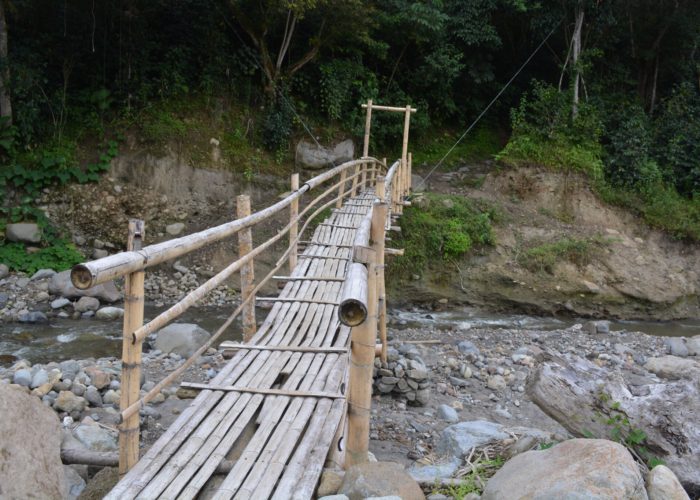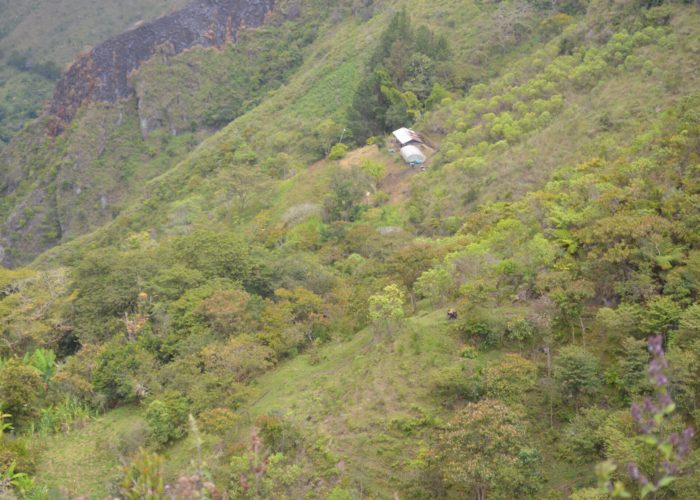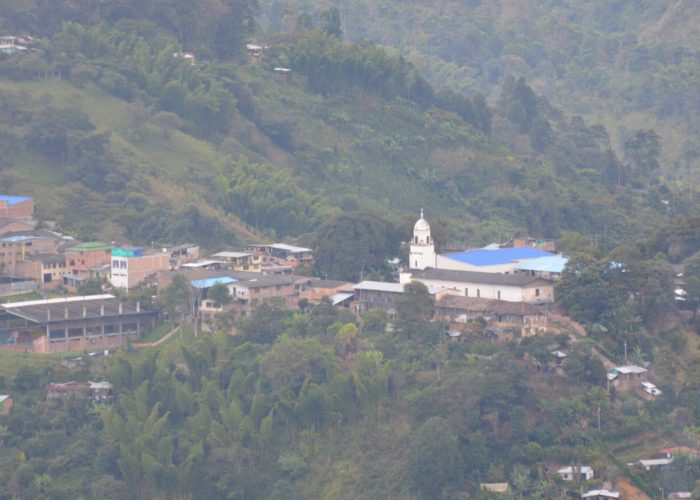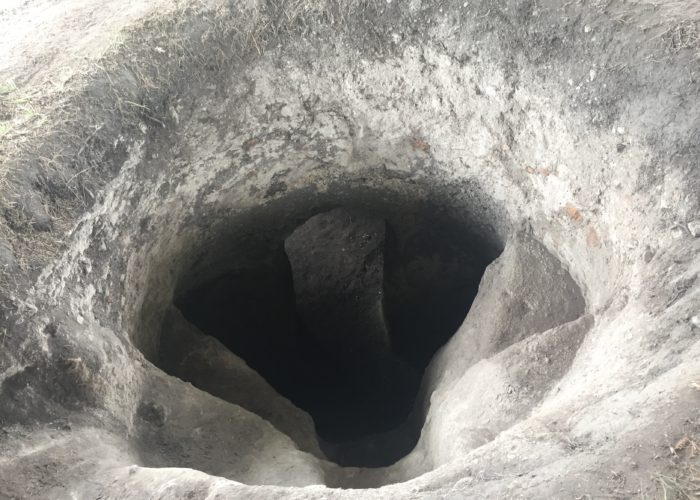Close to San Agustín is Colombia’s second archeological UNESCO World Heritage Site, the ancient caves and burial chambers that were built around 600 to 900 AD. Again not much is known about the culture that built these tombs, though there are some similarities to San Agustín. To get to Tierradentro from San Agustín or for that matter anywhere else in Colombia requires some determination. The 200km journey from San Agustín is not for the unadventurous traveller as it involved four changes of bus / collectivo:
- San Agustín to Pitalito
- Pitalito to Garzón
- Garzón to La Plata; and
- La Plata to San Andres de Pisimbalá
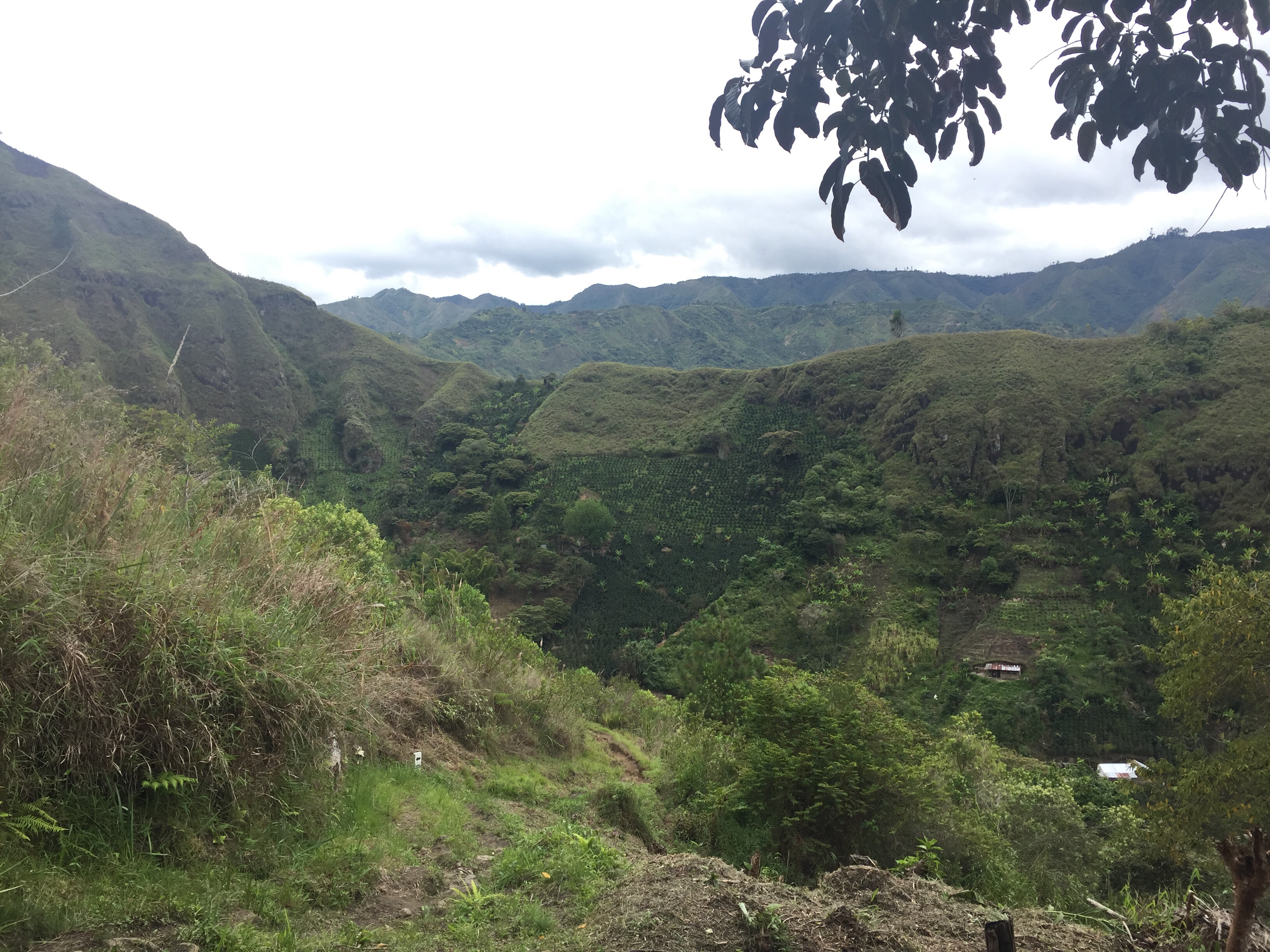
We stayed in the small village of San Andrés de Pisimbalá some two kilometres from the main entrance to the Archeological Site and right in the heart of rural Colombia. The main site consists of five principal sets of tombs that are connected via a 14 km walk through the surrounding countryside. We decided to break our visit into two as the sites all have an opening time from 8am to 4pm, so while all can be visited in one day, two days makes for a much less rushed experience and enables you also to enjoy the spectacular scenery and also the fertile farmsteads.
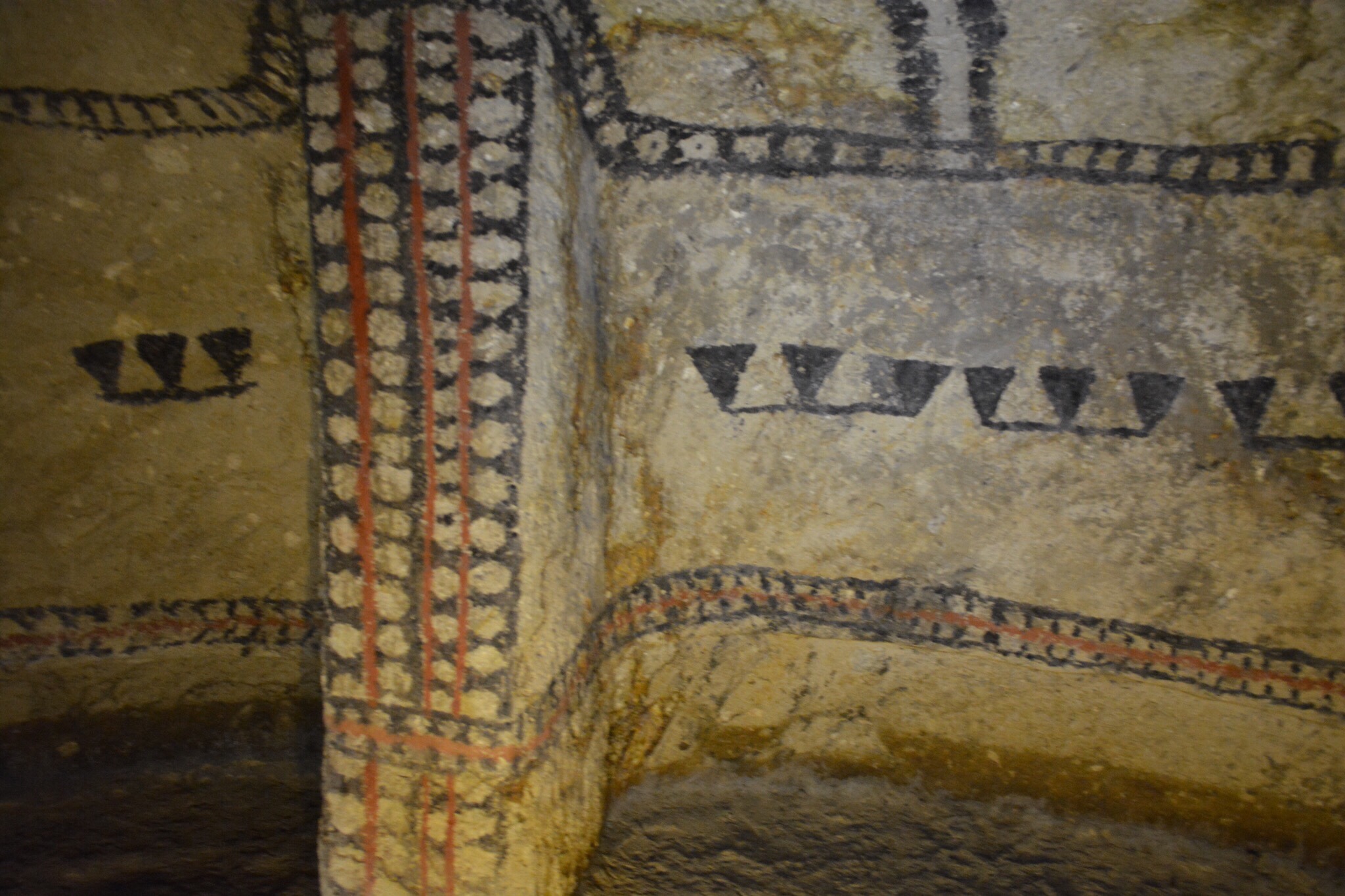
The first site, some 860 metres uphill from the museum and entrance is the Alto de Segovia which is the principal site and contains some 25 tombs open to the public. There are many more unopened tombs too. Some of the more spectacular tombs contained painted walls of patterns and faces. To reach the tombs you go through a trap door and descend down some very steep stone steps into the tombs. Some of the tombs have movement sensitive lights, but others don’t and you’ll need a head torch to see all the detail. One the tombs also had the original funerary urns.
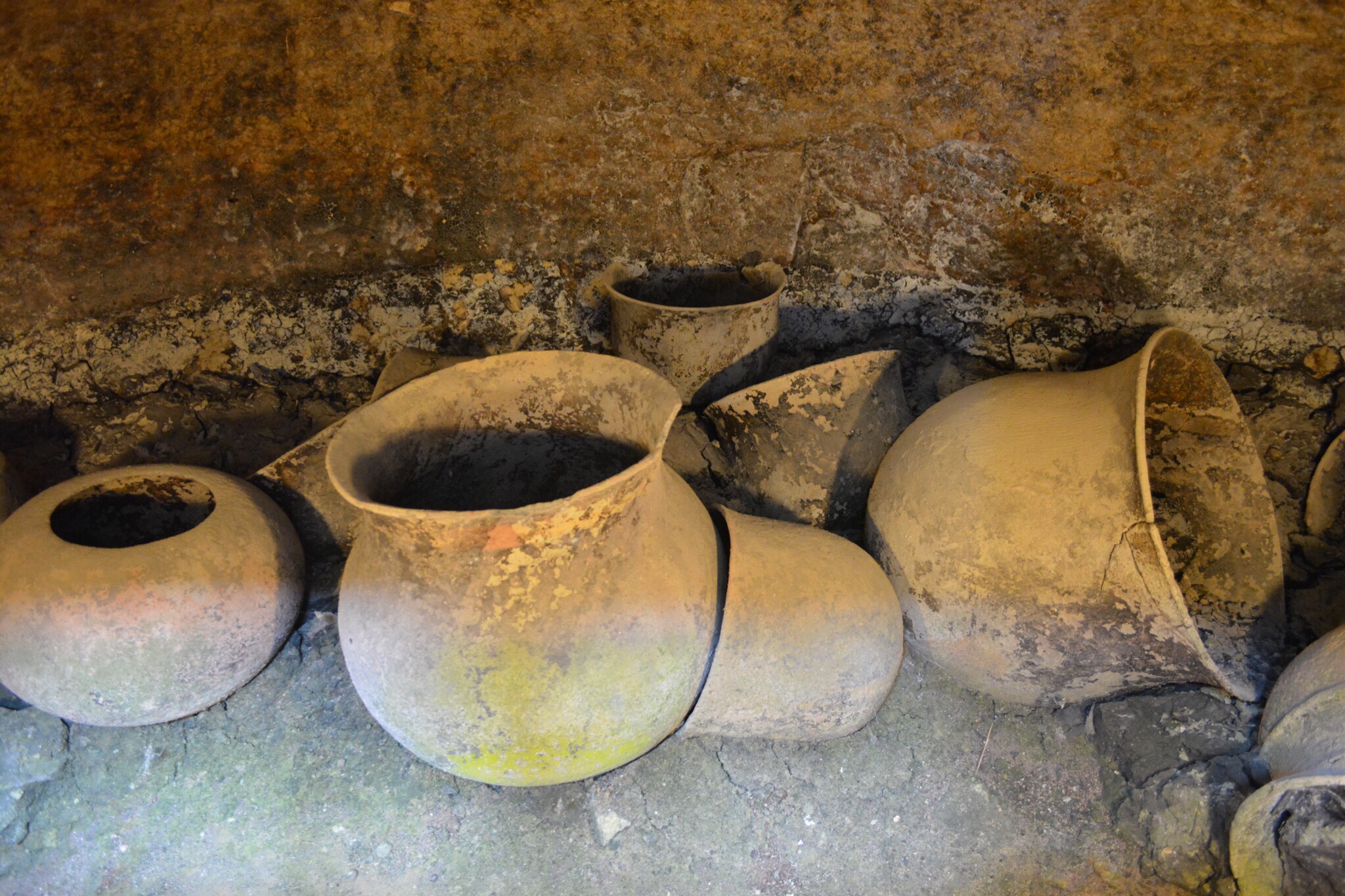
Beyond Segovia a further 740 metres up hill and through a coffee farm is the Alto de Duende, where there are a further five tombs. These tombs do not have lights and lack the paintings of those at Segovia, but again are fascinating to visit.
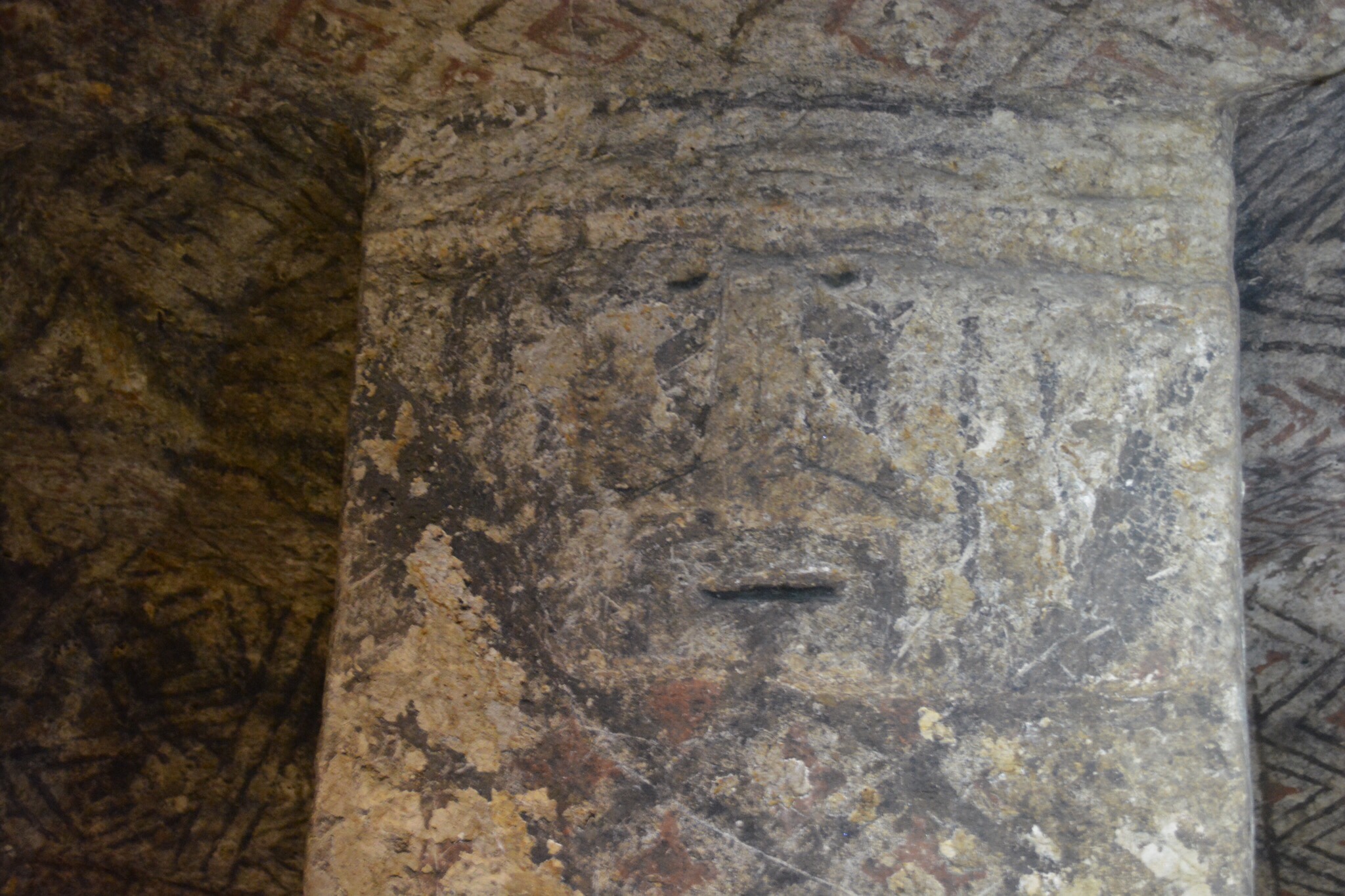
The third site is El Tablón, some 2.6 kms largely along a small rural road. Here there are 9 statues, a bit like this found in San Agustín, but without the large incisor teeth typical of those in San Agustín. The statues were of both men and women, one of which complete with headdress was probably someone very important.
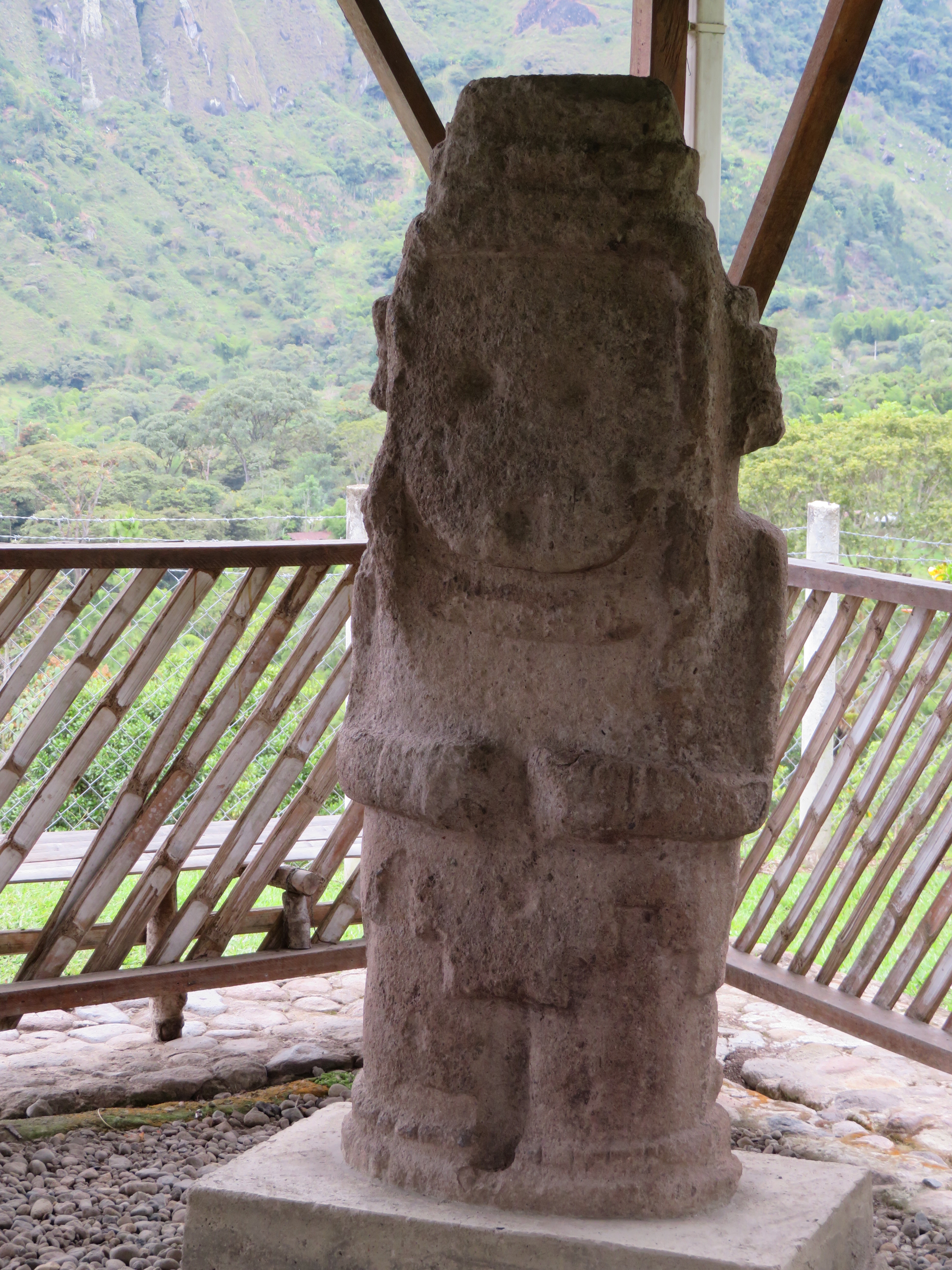
The guards at each of the sites were all very friendly and given that they do not receive that many visitors a day, must find their work quite lonely and isolating.
Day two took us up the 770 metres to the fourth site, Alto de San Andrés, where there are a further 7 open tombs, one of which has some colourful paintings including faces, similar to the best tombs in Segovia.

Beyond San Andrés is the final site, Alto del Aguacate, which is a hard 3.1 kms climb overlooking the valleys of the Rios San Andrés and Ullucos. The climb takes you through a number of small holdings growing coffee and tropical fruits. alto del Aguacate stands on the top of a ridge overlooking the valleys below. There are some 42 open tombs there and a further 20 or so unexplored. These tombs are unattended and over the years given their relative isolation have been seriously looted. Unlike the other tombs you climb down the original steps and right into the dark caves. While the open tombs have canopies protecting them from the worst of the elements, they do not have locked trap doors or stabilised steps down into them. There is then a steep climb of 2.4 kms back down to the main entrance and museum.
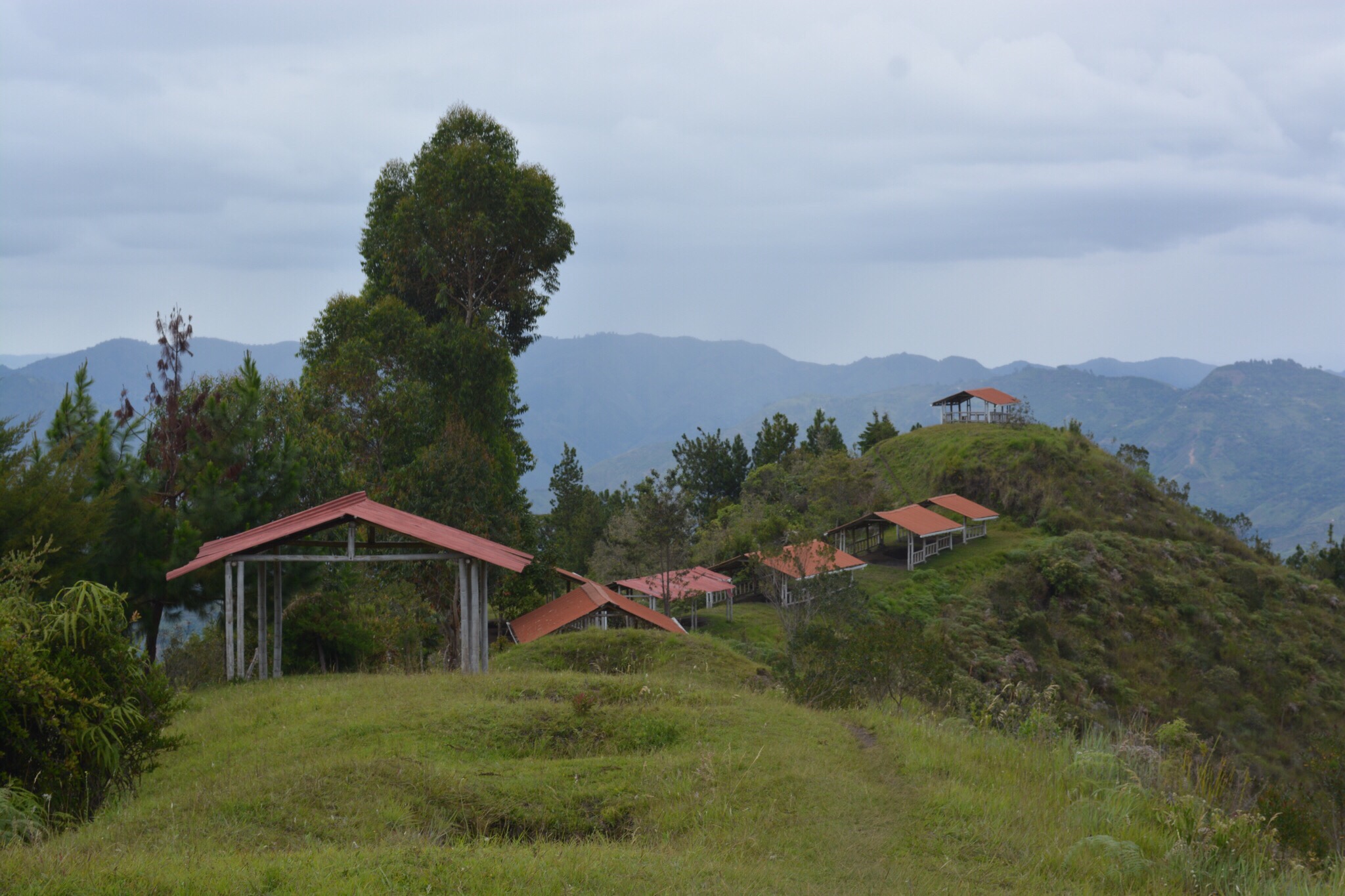
Tierradentro makes San Agustín seem the centre of the world, as pretty much this site probably gets less than five visitors a day so you pretty much have it all to yourself. Also the full 14 km loop around the five sites makes for a rewarding and mildly challenging trek through some of the most beautiful and fertile Colombian countryside.
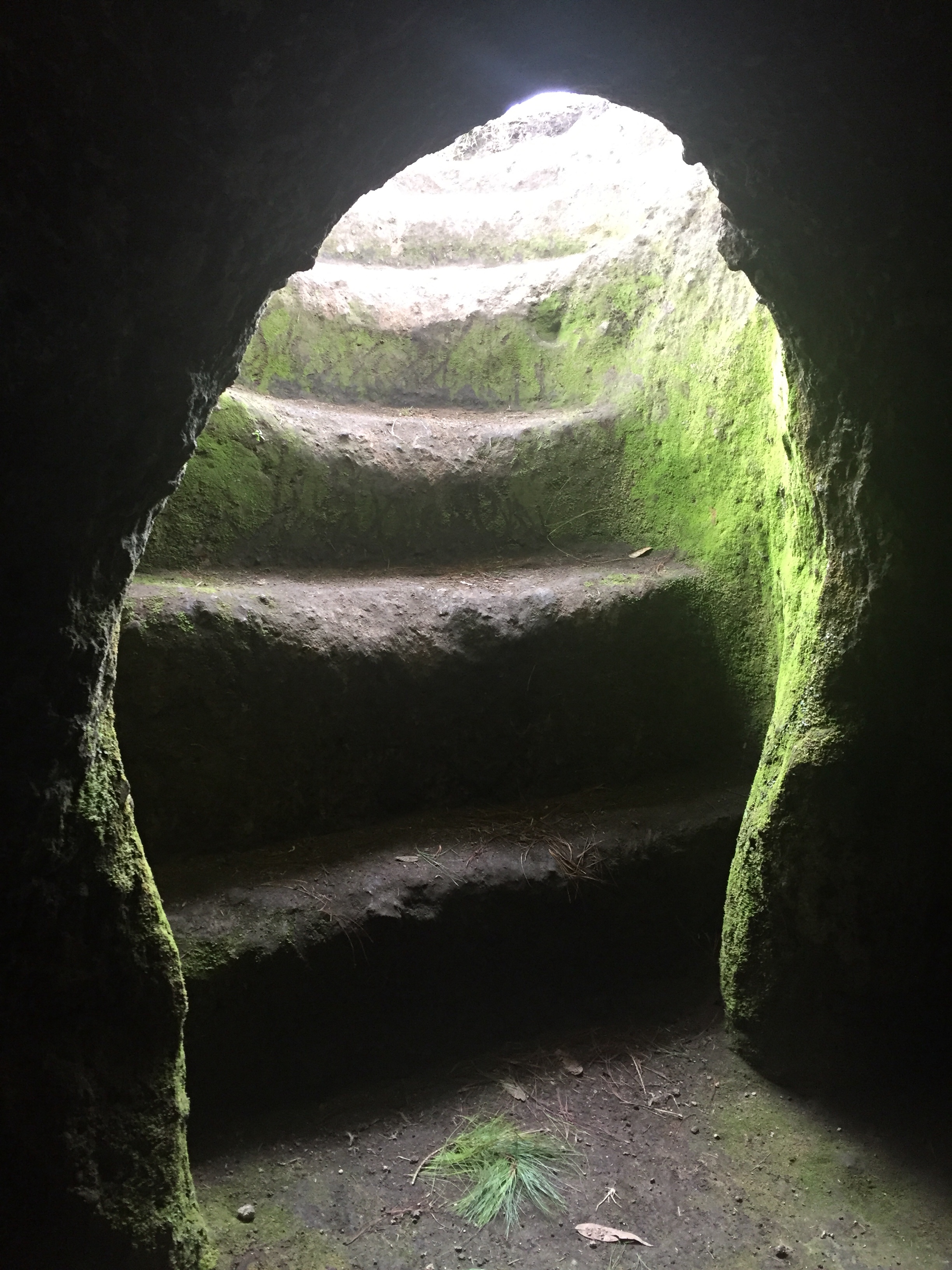
The 111 km bus ride back to Popayán, while slightly less rough than that to San Agustín is still a bit of a logistical challenge. The one direct bus a day leaves San Andrés Pisimbalá at 6am, but on the day of our departure didn’t show up so we have to revert to a collectivo to Inzá and then a change of collectivo for the final leg to Popayán. The road in parts is going through some serious maintenance and upgrade so maybe in a couple of years the 111 kms may take a couple of hours.
Date: 28/08/2018 to 31/08/2018
